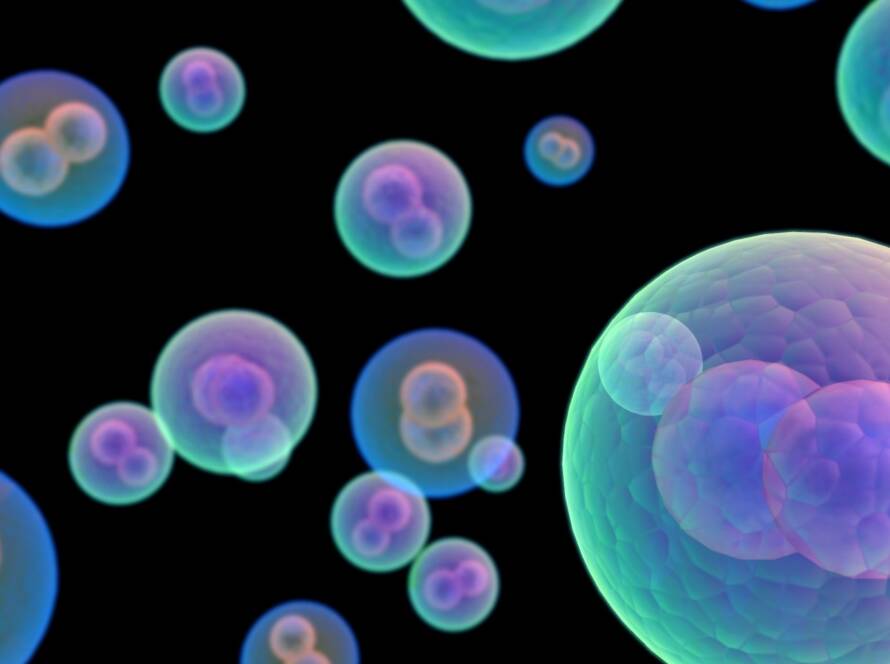Our brain’s “happy chemical” dopamine naturally declines, starting in early adulthood. By the time we reach our sixties, levels can drop to half of what young adults have. This reduction affects more than just our sense of pleasure, it shapes our motivation, movement, memory and cognitive abilities.
Let’s explore the science behind dopamine levels decrease with age and its effects on brain health. Discover evidence-based strategies that support optimal dopamine function as we age.
Does dopamine production decline as we get older?
Dopamine levels naturally decrease with age. As we get older, the brain tends to produce less dopamine and the number of dopamine receptors and transporters also declines. This gradual drop can affect mood, motivation, focus and movement, which is why some older adults experience slower thinking, reduced drive or mild motor issues. While this change is part of normal aging, lifestyle factors like regular exercise, good nutrition and mental stimulation can help support healthy dopamine function and maintain brain vitality over time.
What is dopamine and why it matters for aging
Dopamine is a vital neurotransmitter in the brain that shapes many cognitive and physical processes throughout life. This chemical messenger works through specific neural pathways to affect our daily function and well-being.
Dopamine’s role in motivation, movement and memory
The brain’s reward system depends on dopamine to create states that drive us toward rewards. This neurotransmitter does more than create pleasure, it decides which goals become compelling enough to spark action. The striatum uses dopamine to control physical movement and even small drops in dopamine levels can change motor behavior before symptoms show up.
Scientists have found that dopamine affects our ability to think flexibly and adapt to new situations. The brain’s learning center, the hippocampus, forms stronger connections between synapses thanks to dopamine, which helps create memories. Research shows that even healthy young adults executive functions vary based on their dopamine system’s performance.
How dopamine supports cognitive and emotional health
The right dopamine levels help the prefrontal cortex manage attention, control impulses and maintain working memory. People process complex information better when dopamine works well in this area. Research points to dopamine’s role in making synapses more flexible across brain regions, which helps us learn.
Dopamine creates links between rewards and feelings through the amygdala. This explains why people with more dopamine signaling in motivation-related brain areas tend to be more driven. So this neurotransmitter shapes how we respond to both good and bad experiences.
Links to Parkinson’s, depression and cognitive decline
Parkinson’s disease starts after a 48-68% loss of dopaminergic neurons in the substantia nigra or a 70-80% drop in the striatum’s dopamine. The loss of dopamine in Parkinson’s associates with both movement problems and thinking difficulties, including trouble with working memory.
Depression shows up 2-3 times more often in Parkinson’s patients compared to other elderly people, according to studies. This happens because dopamine works with serotonin and norepinephrine to control mood, energy, motivation and sleep. Depression might appear 2-5 years before a Parkinson’s diagnosis, which suggests it’s part of the disease’s core process.
The brain’s dopamine levels naturally drop with age, which affects thinking skills, especially those controlled by the frontal lobe. Older adults who can make more dopamine stay sharper despite brain tissue loss. The brain might try to make up for age-related changes by adjusting its dopamine production.
Does dopamine decrease with age? What the research shows
Research shows that different parts of the brain’s dopamine system decline with age. The pattern and speed of this decline varies between brain regions and dopamine components.
Decline in D1 and D2 receptor availability
Studies show that D1 and D2 receptor subtypes decrease with age throughout the human forebrain. In hippocampal CA1 neurons, D1 receptors decline at 5.2% per decade. D2 receptors drop by 5.0%, D3 by 11.2%, D4 by 4.7% and D5 by 5.0%. These changes are to different regions, for example, entorhinal cortex layer II neurons show no age-related changes in any dopamine receptor subtype. The hippocampus shows a marked D2/D3 receptor density reduction of 10-12% per decade.
Reduced dopamine transporters in the striatum
The brain’s dopamine transporter levels drop as we age. Research points to a 5.7% decline per decade in striatal dopamine transporters. Different parts of the striatum might age differently, with the caudate possibly showing bigger changes than the putamen.
Synthesis capacity remains relatively stable
Unlike receptors and transporters, the brain keeps its ability to make dopamine as we age. Many studies show that dopamine production stays steady. Older adults might even produce more dopamine than younger people, especially in the dorsal caudate. This could be the brain’s way of making up for other dopamine-related losses.
Meta-analysis findings on age-related changes
A detailed meta-analysis shows that age affects many parts of the dopamine system. D1-like receptors change by a lot compared to D2-like receptors. The dopamine system’s average decline ranges from 3.7% to 14.0% per decade. The brain’s ability to make dopamine stays strong even as we age.
Nonlinear patterns and regional differences
The dopamine system doesn’t just decline in a straight line as we age. Many brain regions show a curved pattern, binding potential drops from young adulthood to middle age and then levels off. Each region ages differently. The temporal and frontal cortical regions change the most. The caudate, putamen and thalamus show moderate changes. The ventral striatum, pallidum and hippocampus barely change at all.
Consequences of reduced dopamine in older adults
The brain’s dopamine levels naturally decrease as we age. This decline creates substantial changes in brain function and affects daily life. These changes go beyond simple chemical alterations and disrupt cognitive health and quality of life.
Slower processing and reduced motor control
The age-related dopamine decline substantially affects motor skills and processing speed. Research shows that striatal dopamine transporter availability relates directly to performance on cognitive processing speed tests. Dopamine levels decrease by approximately 10% per decade, which leads to a decline in both cognitive and motor performance. Finger tapping tests show strong connections with dopamine D2 receptor availability. This shows that even small dopamine losses affect motor behavior before clinical symptoms appear.
Lower motivation and emotional blunting
People become less willing to work for rewards when dopamine depletes. Studies reveal that reduced dopamine makes energy use get pricey. Older adults lose motivation to use energy as their dopamine levels drop. Dopamine deficiency often demonstrates itself as apathy, a reduced level of motivation. This affects up to 47% of those with mild cognitive impairment and 80% with moderate impairment, according to studies. The motivational deficit typically shows up as reduced goal-directed behavior. People withdraw socially and experience emotional numbness.
Increased risk of neurodegenerative conditions
Reduced dopamine function makes people more vulnerable to neurodegenerative disorders. Studies show that cognitive problems emerge after dopamine losses in critical regions like the basal ganglia and hippocampus. Apathy in older adults serves as an early warning sign of upcoming dementia. One study found that patients with both amnestic mild cognitive impairment and apathy faced nearly sevenfold risk of developing Alzheimer’s disease.
Potential compensatory mechanisms in the brain
The aging brain shows remarkable adaptability despite these challenges. Many dopamine system parts decline with age, but dopamine synthesis capacity stays stable or increases. This boost likely represents the brain’s natural defense mechanism for cognitive resilience. Rodent studies show that when dopamine-producing neurons deteriorate with age, the activity of tyrosine hydroxylase increases. This enzyme creates dopamine. Such backup mechanisms help maintain function even when receptors and transporters decline.
How to support dopamine function as we age
Research shows several strategies that can help maintain dopamine function as we age. These approaches might reduce age-related changes in thinking and movement.
Exercise and physical activity
Your brain produces and releases more dopamine when we exercise regularly. Research shows that physical activity boosts dopamine transmission in everyone, whatever their age or gender. We only need 5 minutes of moderate-to-vigorous activity daily to protect our brain health. This improves processing speed, working memory executive function in older adults. Exercise helps dopamine levels by controlling fatigue. Higher dopamine activity during exercise delays tiredness, while lower levels make us tired faster.
Dietary strategies: tyrosine, omega 3s, antioxidants
Foods rich in tyrosine help our body make dopamine. This amino acid is essential for dopamine production. Good sources include lean proteins like chicken, turkey and fish, along with dairy products, nut and seeds. We’ll find plenty of tyrosine in almonds, walnuts, pumpkin seeds, milk, cheese and yogurt.
Omega 3 fatty acids play a vital role in regulating dopamine. A study with rats showed that eating fish oil raised dopamine levels in the frontal cortex by 40%. We can get omega 3s from fatty fish like salmon and mackerel or from flaxseeds and soybeans.
Foods high in antioxidants protect neurons that make dopamine. Berries like blueberries and blackberries, leafy greens such as spinach and kale various nuts support brain health and might boost dopamine production.
Sleep hygiene and light exposure
Sleep substantially affects how our body regulates dopamine. Poor sleep can lead to cognitive decline in older adults. Morning light exposure between 6:00 and 12:00 helps us sleep better and maintains stable daily rhythms. Light reduces melatonin, increases serotonin and keeps yur body clock in sync. This improves sleep quality and might support dopamine function.
Cognitive engagement and social interaction
Brain stimulation helps preserve dopamine function as we age. People who lead intellectually active lives tend to maintain better cognitive health. Simple activities like visiting art galleries, museums, concerts, or theaters help reduce cognitive decline.
Our social connections affect dopamine production directly. Good social interactions trigger dopamine release in our brain’s ventral tegmental area. These social rewards strengthen our brain’s motivation systems and help form memories.
Supplements: L-tyrosine, curcumin, mucuna pruriens
L-tyrosine supplements can increase dopamine production and help us think better under stress.
Mucuna pruriens (velvet bean) contains natural levodopa, which our body turns into dopamine. Studies show it works as well as synthetic levodopa for movement problems in Parkinson’s patients.
Curcumin from turmeric releases more dopamine and helps fight depression. A small study found that curcumin worked about as well as Prozac for improving mood in depression patients.
Age-related dopamine decline is a natural biological process, not a pathological condition. Learning about this chemical transformation helps us maintain cognitive vitality throughout life.
Our brain’s plasticity combined with proactive lifestyle choices can help us stay cognitively resilient and emotionally balanced throughout life. The dopamine system responds remarkably well to positive interventions despite its vulnerabilities. This gives us substantial control over our neurochemical health as we age.


